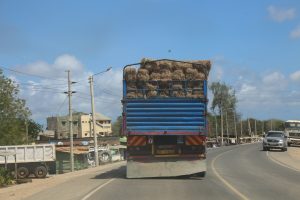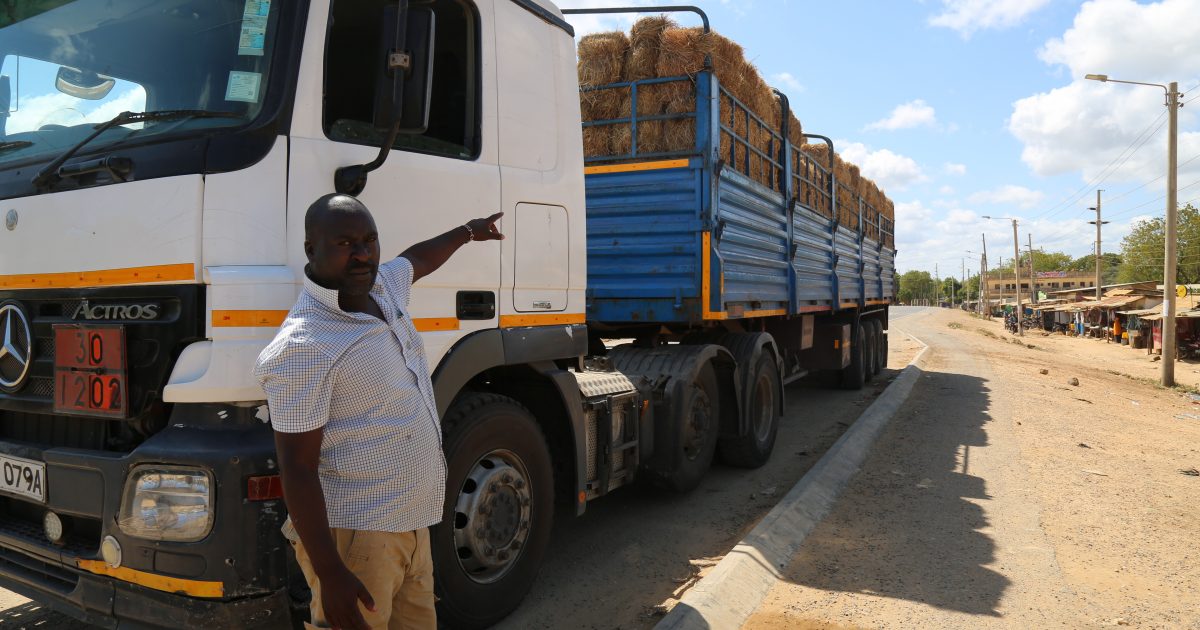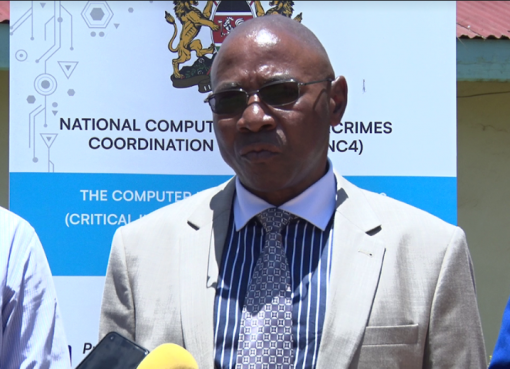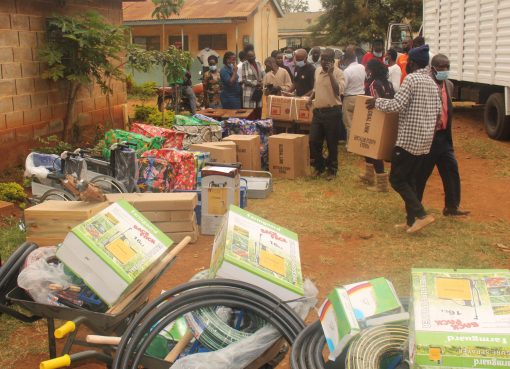For the entrepreneur Charles Njenga, the biting drought crisis in Lamu presented an opportunity that was too good to pass up, investing in bringing and selling much needed hay to herders who were in desperate need for feeds for the diminishing stocks which have been ravaged by hunger and disease.
The wholesale vegetable vendor who buys and sells his produce across Lamu, and who has been in the business of bringing fresh produce to Lamu from Nyahururu for more than 15 years, narrates how the current drought crisis sparked an idea to bring in hay after a herder jokingly asked him why he didn’t have any vegetables for his animals.

“It was during a random banter encounter with a herder friend of mine that the idea to bring in hay from Isinya was born,” he states.
Through the conversation with the herder, Njenga was able to gather that more than 3,000 heads of cattle have died and there were fears among pastoralists that more were likely to die unless they got assistance.
Through this, Njenga was able to decipher a business opportunity to invest in buying and selling hay, even with his fingers crossed.
“I was initially worried about the reception I would get knowing how herders think that grass is a God given gift that they are entitled to,” he quips.
He delves into how in August he decided to invest in bringing hay from Isinya with an investment of Sh500, 000 and decided to luck it out in the hay business.
“I initially decided to manage my expectations knowing that the business was something that was yet to be explored,” Njenga says, adding that he considered a few factors before investing in the business wholesale.
He states that “when you look across the country to Central Kenya, there is a lot of grass and rainfall at the moment yet there are no initiatives to ensure that herders get the grass in the areas that are most affected”.
Fourteen counties have been affected by a drought crisis in the country, with the majority of those affected being pastoralist regions.
“I knew that it would take the county government some time before they brought in intervention measures and took a chance that the herders would buy the hay out of necessity,” he said.
Today, he feels that his “Eureka moment” has been vindicated as he delivers a lorry full of hay on his fifth trip back to Lamu with 3,000 bales of hay wrapped and ready for sale.
“I have already sold 1,000 bales in Witu area, and I will be traversing up to Mokowe to sell the hay which is in demand with there being no grass to feed livestock in Lamu,” he remarks as he makes his way back through Hindi town.
Initially, onlookers were curious, then herders made funny remarks about him selling grass followed by serious inquisitors looking to buy the hay.
“I sell the hay at Sh400 per bale which is very fair considering that there are many overheads to consider when bringing the hay from Isinya to Lamu,” he says.
Njenga is however able to still make a hefty profit of Sh500, 000 having already bought the hay for Sh90 bale at wholesale.
“The hay that I have in this lorry can feed more than 500 cows for a month,” he reveals.
Although it is a case of a little too late, the Lamu County government has since partnered with FAO to provide relief animal feeds to over 750 livestock keepers across the county covering over 3,000 heads of cattle affected by drought and disease.
An emergency water trucking programme is also underway in Lamu, with the most affected areas namely Moa, Chalaluma, Mangai, Kiangwe, Basuba, Roka, Belebele and Koreni areas being targeted for as hard hit areas.
By Amenya Ochieng




